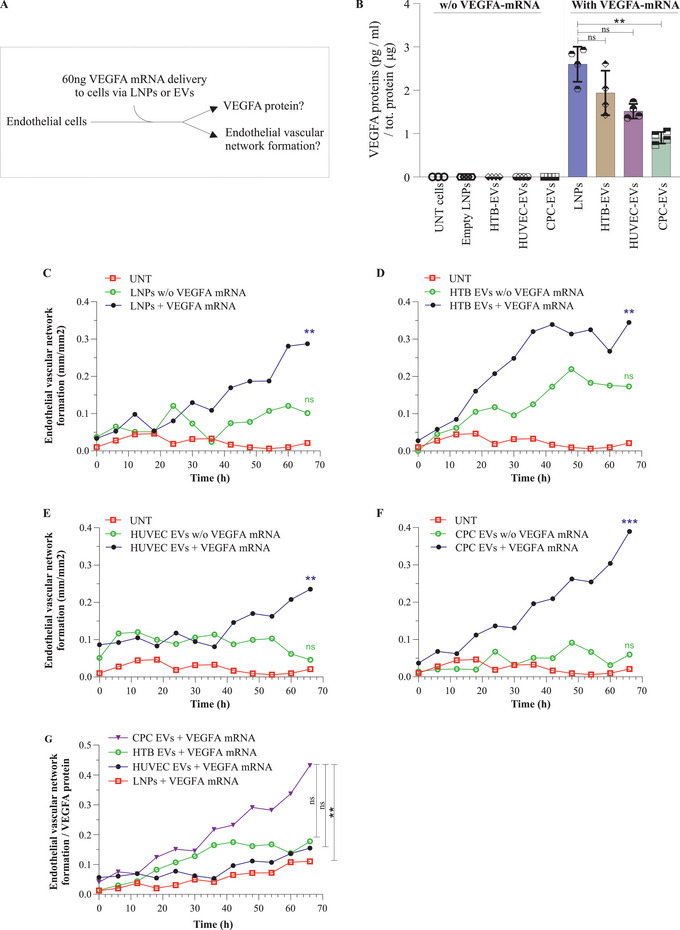Figure 7.

Extracellular vesicles (EVs) can functionally deliver. The VEGF‐A mRNA of LNPs. EVs secreted from LNP‐VEGF‐A mRNA treated cells were isolated, which contained VEGF‐A mRNA and were further delivered to recipient cells examine the functionality. A) VEGF‐A mRNA (60 ng) was delivered to HUVECs via EVs or lipid nanoparticles (LNPs), and the production of VEGF‐A protein and vascular networks were quantified. B) Quantification of VEGF‐A protein produced after delivery of VEGF‐A mRNA via EVs or LNPs (n = 4). Statistically significant differences were evaluated by the Friedman test followed by the Dunn's multiple comparison test to compare LNPs + VEGF‐A mRNA with EVs + VEGF‐A (**p < 0.01; ns = no significant differences). C–F) Endothelial vascular network formation after delivering equal quantity (60 ng) of VEGF‐A mRNA via LNPs or three different EV types. Data at each point represents the mean of seven replicates (n = 7 treated, n = 3 untreated). For C–F), the Kruskal‐Wallis test followed by the Dunn's multiple comparison test was applied to compare the samples of VEGF‐A mRNA, with samples of without VEGF‐A mRNA and untreated, at 66 h. (**p < 0.01; ns = no significant differences). G) The efficiency of functional VEGF‐A mRNA delivery by measuring endothelial network formation per VEGF‐A protein produced upon delivery of equal amounts (50 ng) of VEGF‐A mRNA to cells via LNPs or three different EVs. Data at each point represents the mean of seven replicates (n = 7 treated, n = 3 untreated). The Kruskal‐Wallis test followed by the Dunn's multiple comparison test was applied to compare CPC + VEGF‐A mRNA, with LNP‐, HTB‐, HUCEC‐, (+ VEGF‐A mRNA) at 66 h (**p < 0.01; ns = no significant differences). UNT, untreated; w/o, without.
